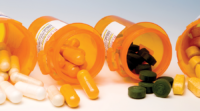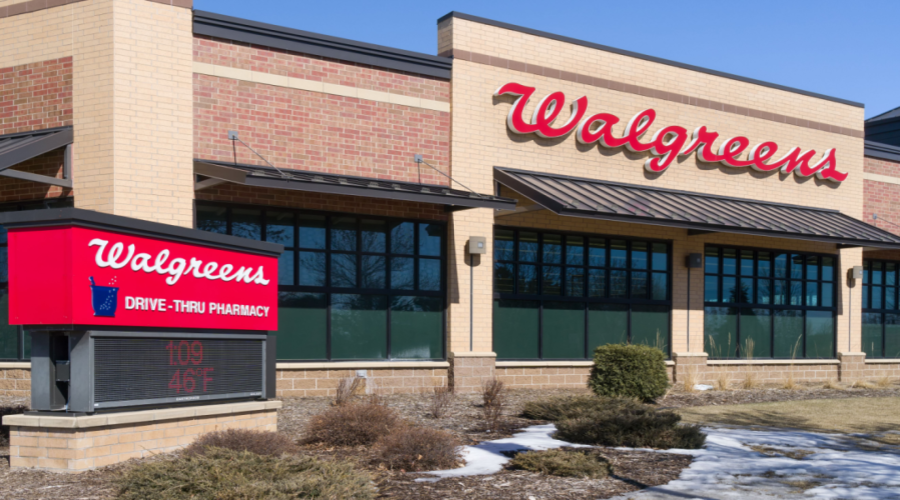Retail theft is on the rise. In 2019, over $68 billion worth of merchandise was shoplifted from retailers in the United States according to a report from the Retail Industry Leaders Association and Buy Safe America Coalition.
Another study from the National Retail Federation found that the average amount lost during a shoplifting incident in 2020 was $462. As an independent business with already slim margins, that’s not a loss your pharmacy can take sitting down.
As shoplifting becomes more common, be prepared to protect your pharmacy. These tactics can help you prevent retail theft and deter would-be thieves.
Know the common targets of shoplifting
According to the NRF, many of the most commonly stolen items can be found in a pharmacy. These include:
- Laundry detergent
- Allergy medicine
- Razors
- Pain relievers
- Infant formula
- Teeth-whitening strips
- Deodorant
- Contraceptives
- Children’s toys
Once you know the common targets, you can take steps to protect them. Consider putting your high-value, commonly stolen items behind a glass case that employees must unlock.
Your pharmacy layout can also help with theft prevention. Organize your shelves so you can keep the whole space within your line of sight, making it difficult for shoplifters to lurk in low visibility areas.
Know the most common tactics for shoplifting
Get inside shoplifters’ heads to learn how they operate. These are the most common tactics for stealing:
- Concealing items: A simple, common way thieves get away with items without paying is by concealing the goods in their personal belongings. They may hide the goods in a bag, stroller, or their clothing, and then they simply walk out.
- Tag switching: Shoplifters switch the tag of a high-priced item with a lower-priced item and pay the lower price when they check out.
- Causing a distraction: Shoplifters work together, having one or more people talk with employees while someone else makes the steal.
- Using metal-lined bags: To steal items with security tags without setting off an alarm, some thieves have begun putting items in metal-lined bags that disguise the security tag.
- Removing items from packaging: To reduce the bulk of shoplifted items, thieves will take merchandise out of its original packaging and conceal it.
Educate your staff members on shoplifting
Your front-end pharmacy employees are the first line of defense against potential thieves and shoplifters. Train them to implement techniques that will deter theft.
Interact with patients
Providing friendly, attentive customer service can be a simple way to keep thieves on their toes. Have staff members greet every person that walks through the door, and ensure they don’t leave patients unattended in the store.
Staff should ask people if they need help finding anything and remain visible to shoppers. For regular patients, these behaviors are just a sign of friendly service, but for potential thieves, attentive employees send the sign that they are being watched.
Recognize the signs
There is no “typical” shoplifter, and it’s important not to profile people based on their race or gender. However, shoplifters do sometimes exhibit common behaviors that you can teach your employees to recognize:
- Shoplifters may work in groups
- They may be outside your usual patient demographic
- They may wear oversized clothes, carry large bags, or bring a stroller
- They may avoid eye contact with staff, or seem to watch staff
- They may wander around the store without picking anything up
- They may have shoplifted from your pharmacy previously
If employees notice people in the store exhibiting one or more of these behaviors, they can step in under the pretense of providing good customer service and discourage the shoplifters before they steal anything.
Take protective measures
These tools can help you spot a potential shoplifter and recover quickly if you’ve been shoplifted.
Mirrors
To give employees more visibility throughout the store, consider installing mirrors in strategic locations.
Mirrors will help you get coverage for the more secluded nooks and crannies of your pharmacy that employees can spot if something fishy is going on. They are also relatively inexpensive to purchase and install.
Cameras
If you want to take a technological step up from mirrors, install security cameras in your pharmacy.
Security cameras act as a deterrent because if people know they are being recorded, they will be less likely to steal. And in the case that a theft does occur, you can go back to review your security footage to provide evidence to the authorities.
However, the downside of security cameras is that your regular patients might feel like their privacy is being violated, so you’ll have to decide if that trade-off is worth it.
RFID tags
Another precaution you can take is using RFID tags on your products. RFID tags are often used to track merchandise throughout the supply chain, but they can also be used for theft prevention.
Usually affixed to products as a sticker or pin-tag, RFID tags will set off an alarm if someone takes the product without paying.
RFID tags are only about 4 cents per tag, but the downside is that thieves can simply remove the sticker if they know it’s on the product.
Insurance coverage
Protect your business in the aftermath of a shoplifting event by making sure you have the proper insurance coverage.
Your commercial property insurance probably doesn’t cover crime-related losses, so you should look into purchasing an additional business crime insurance policy.
A business crime policy will cover losses related to theft, and it will also cover you in the case of fraud or embezzlement.
What to do if you catch a shoplifter
What should you do if you or an employee catches a shoplifter in the act?
You shouldn’t expect your staff to put themselves in harm’s way to prevent theft. However, sometimes, intervention is possible.
Confront the shoplifter by asking them about the items they have taken from the pharmacy and ask them to return with you. If you are polite and firm, many thieves will cooperate. Take them into a back office, call the authorities, and ask them to give back any stolen merchandise. The police can handle it from there.
If the thief gets away or doesn’t want to cooperate, don’t chase or try to detain them anyway. That could result in injuries — or accusations of false imprisonment. However, you should still call the police to make a report. Hand over any security footage and give them any other evidence you may have.
The consequences for shoplifting vary from state to state and depend on how much was stolen, but it’s typically treated as a low-level offense. Shoplifters may often be expected to repay the value of what they stole.
A Member-Owned Company Serving Independent Pharmacies
PBA Health is dedicated to helping independent pharmacies reach their full potential on the buy-side of their business. Founded and owned by pharmacists, PBA Health serves independent pharmacies with group purchasing services, wholesaler contract negotiations, proprietary purchasing tools, and more.
An HDA member, PBA Health operates its own NABP-accredited secondary wholesaler with more than 6,000 SKUs, including brands, generics, narcotics CII-CV, cold-storage products, and over-the-counter (OTC) products — offering the lowest prices in the secondary market.












